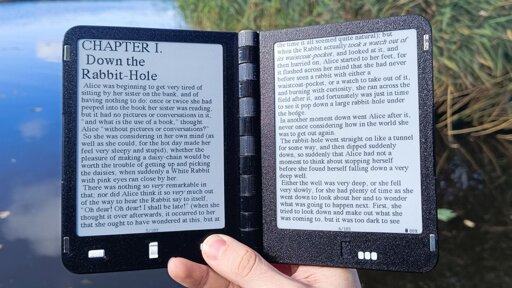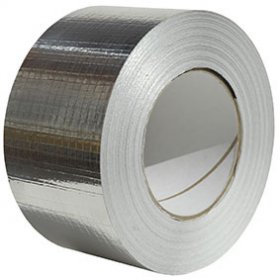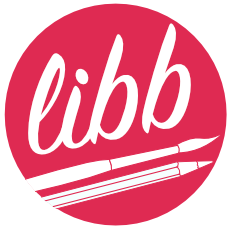Not to be a hater, but why? (Referring to the two screens, not the open source part)
Obvious answer is to be more like a normal book
Sure, but again, why? People who care about the physical feel of books just get them from the library. People who want something convenient have e-readers. It feels like a worst of both worlds more than a best
The case with the front cover flap already does that.
Probably much cheaper and easier to get, while allowing for a reasonably large total screen size.
Some books are written or laid out with two pages in mind. What this specific e-reader unfortunately doesn’t solve is the problem with double page spreads in manga (although digital versions, at least those I use, don’t spread them on two pages anyway).
Also I could see it being useful if you can “pin” some pages on one side, especially if you need to compare multiple documents on the fly.
I’m a huge fan of this idea. Having a light clamshell device for reading means the formatting would be (should be, might be) closer to that of a physical book. With most books I don’t think that matters, but there are tons where the author plays with page formatting & typography and it rarely comes off well in a single-screen ereader.
Additionally - clamshell means built-in screen protection. I’ve never liked those stick-on 3rd party screen protector sheets, and a clamshell design is going to do a better job of protecting the screen anyway. Something like this you can snap it closed and chuck it in a bag without worrying.
I just checked the weight: it’s 300g which is a little heavier than my Kobo with case (273g) and a ~400 page paperback (213g). That’s lighter than I expected given that it’s basically two readers stuck together including two batteries.
However, I think the kind of media that would benefit from the original page layout would also need a higher resolution, and perhaps colour.
However, I think the kind of media that would benefit from the original page layout would also need a higher resolution, and perhaps colour.
Indeed. Resolution will probably need to be higher in that regard. For books (not comics or art books), color should not be that important.
That being said, the issue of (not) owning and (not) controlling our ebooks is the reason why I stopped reading & purchasing them a few years ago (despite being heavy into those since the early 00s). So, I’m very much interested in that project :)
(not) owning and (not) controlling our ebooks
Dunno about that; there’s plenty of options to own and control your ebooks:
Some books are available without DRM (e.g. some on Kobo.com) or you can strip the DRM, and then keep them on your own storage. You can file and manage metadata with calibre and you can make them available to download using calibre-web.
A stock Kindle will allow adding books via USB or Amazon’s by-email service. A rooted Kindle will let you install Koreader which can talk to calibre-web. A Kobo or many (most?) other ereaders will let you do these things without needing to jump through hoops.
Thx for sharing the links. I know about DRM-free ebooks and about Calibre (and about removing DRM if needed) but one still needs a device to read an ebook (a device one doesn’t fully own or control) or do it on a computer which is not a comparable experience as reading it on a device.
A stock Kindle will allow adding books via USB
Didn’t they recently removed that ability?, as well as the ability to sideload mobi file format?
Moving back (forward?) to paper books is a decision I made after years being almost exclusively an ebook reader. It was not quick and I’m pretty confident it would not be the right choice for everybody. It’s just what works best for me, considering my requirements and expectations.
For years, I kept an old Kindle without Internet access so I was sure Amazon could never force update its firmware. But I want more control (legally) on the books I own and I want reading to remain a simple activity (not something one needs to tweak and fight against). A paper book I can read it without having to root it, jailbreak it or even install anything. I need no device beside the glasses I already own. And I’m not tracked while I’m reading it, which is a huge win for me. Sure, it’s heavier and less portable, there is no syncing, and it wastes more space in my home but I’m fine with that: I learned to not hoard too many books at home and I only need to carry one at a time, and I don’t need sync (I take all my notes on index cards).
When I still lived in the UK I preferred physical books and I still have three crates of them in a lockup. After looking at a screen all day at work, reading paper was a balm for my eyes and my brain.
I only bought a Kindle when I moved to a different country since it was far cheaper than shipping the books.
Not to sound like a Kobo ad, but I feel like I am the customer and not the product with my Kobo - I can install software, and even SSH into it as root, and I’m not tracked. Of course, that could change, unlike with good ol’ books, and books also never run out of battery or get scratches on every page (the Kobo’s screen is far from scratch resistant).
Didn’t they recently removed that ability?, as well as the ability to sideload mobi file format?
I don’t keep up with Kindle news any more, but I just sent a book from Calibre over USB the same as before, and mobi was their own proprietary format* so good riddance to that (epub is the standard format outside the Amazon world).
* that they bought from someone else
Books are horrible in the beginning and the end one side is to think and it’s awkward to hold.
Given your instance (lemmynsfw), I’m gonna assume that it’s because you need to hold the book with one hand ;)
/jk I also prefer the one page format of e-books, although I understand that 2 pages can be good for comic books/manga
As the great french philosopher Wayne gretzky says “Takes one to know one”. Quick wit edgy humor! holy shit im honored thanks for the laugh.
Yeah, I also don’t really see the appeal of a two screen format. Currently use a boox palma 2 phone sized reader. I keep my font size pretty large but don’t really find needing to turn the page a bit more a burden.
Too bad the front isn’t a screen too. It would be pretty awesome to open a book and automatically slave the front screen to the book’s cover.
Also strange that the dev didn’t enable wifi. That’s just strange. It’s running an esp32, it has a wifi chip and getting it to connect is incredibly easy.
Probably don’t want the burden of keeping the firmware up-to-date with the latest security fixes, and miminizes the risk of a security exploit if that door isn’t opened.
We really need FLOSS ebook readers
Unburdened ebook stores that actually stock “everything” is a necessary component here.

Have you seen the resolution? It’s crappy.
I haven’t. More than anything I’m supporting the idea of something like this. Little clamshell ereader that’s not tied to a company? Hell yeah. Version 0.01 here might not be what I’m lusting after, but it’s that much closer to Version 2.0.
I guess I’m too much of a “if you’re gonna do something, then do it right the first time” kinda person. I’ve learned from (too much) experience that compromises on quality too often just wind up being wasted money.
Well the problem here is that there isn’t a company that have money and so they can’t do a very good product, when the project will gain money they can do a V2 with better specs and in general they will know better how build it, this prosuct is pre-launch and in general you have to see those as betas not a end product.
Also, e-ink displays cost more than my balls
Pine64 tried that with their PineNote, which hardware wise seems excellent. But it ended up being so expensive that sales were abmyssal and subsequently there was also little developer take up and general community excitement to make something cool out of it on the software side.
Yeah, that’s pretty common. Final cost will always matter, but the product still has to be worth it. Many companies have a history of not making the best balance calls, however.
One thing I’ve learned never to scrimp too much on, however, is anything i directly interact with. Displays are especially important for the health of your eyes - especially with as much time as most people spend looking at them nowadays. As such, I can’t really get behind this product.
I can dig that. Just like how I have no intention of building / buying this model, but the progress towards something I’ve been pining for is exciting.
If it’s “open source hardware” wouldn’t it be pretty easy to put it different screens?
Like it also only had a 2 GB SD card… I’d guess most people would upgrade that
Pretty cool. I tried to google it, and I couldn’t actually find the source for it. Just a bunch of articles about it and a reddit thread.
I’m curious what it’s written in
Therefore, the design files (schematics, PCB, case) will be made open-source when the campaign is finished and the design is finalized.
Can verify there’s no source open, checked the dev’s github linked from the diptyx web page










